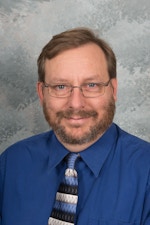Dr. Christopher Hamaker

- About
- Education
- Research
Current Courses
CHE 250.001 Fundamentals Of Inorganic Chemistry
CHE 299.008 Independent Honor Study In Chemistry
CHE 499.008 Independent Research For The Master's Thesis
CHE 290.008 Research in Chemistry
CHE 490.008 Research In Chemistry
CHE 351.002 Advanced Inorganic Chemistry Lab
CHE 250.001 Fundamentals Of Inorganic Chemistry
CHE 251.002 Fundamentals Of Inorganic Chemistry Laboratory
CHE 299.009 Independent Honor Study In Chemistry
CHE 499.009 Independent Research For The Master's Thesis
CHE 290.009 Research in Chemistry
CHE 490.009 Research In Chemistry
Teaching Interests & Areas
General, Inorganic, and Environmental Chemistry Course taught include: Fundamentals of Chemistry (CHE 110); General Chemistry I (CHE 140); General Chemistry II (CHE 141); Fundamentals of Analytical Chemistry Laboratory (CHE 216 Lab); Fundamentals of Inorganic Chemistry (CHE 250); Fundamentals of Inorganic Chemistry Laboratory (CHE 251); Environmental Chemistry (CHE 280); Advanced Inorganic Chemistry (CHE 350); Advanced Inorganic Chemistry Laboratory (CHE 351); Homogeneous Catalysis (CHE 380a52)
Research Interests & Areas
Research in the Hamaker group is currently focused on coordination chemistry, hydrogen bonding, and catalysis. The research projects bridge the traditional areas of inorganic and organic chemistry, with exposure to analytical analysis techniques. There are two major projects currently under investigation: (1) the synthesis of ligands and transition metal complexes with the goal of developing materials for the removal and recovery of heavy metals; (2) the investigation of intermolecular interactions, especially hydrogen bonding, in the solid state (crystal engineering); and (3) development of new ligands for asymmetric catalysis. The current projects will allow students to encounter many synthetic and analytical techniques. Modern spectroscopic techniques including NMR, IR, UV/vis, X-ray crystallography, and electrochemistry are used to characterize the new compounds. Additionally, chromatographic techniques including GC, GC/MS, TLC, and column chromatography are used for identification, quantification, and isolation of catalytic products. Project 1: Synthesis of new ligands with potential environmental applications. Heavy metals are significant environmental pollutants. Mercury is highly toxic and known to bioaccumulate in the food chain, lead can lead to birth defects, and cadmium is acutely toxic. These elements are found in electronic devices and rechargeable batteries. The noble metals Ru, Os, Rh, Ir, Pd, Pt, and Au and their complexes are commonly used as catalysts in the chemical and pharmaceutical industries. Removal of these metals is important not only because of their cost, but also because of their potential toxicity. The recommended limit according to the European Agency for the Evaluation of Medicinal Products for all six of the above listed noble metals combined in active pharmaceutical ingredients (API's) is 5 ppm. Therefore, recovery of these metals is of both environmental and economic importance. Schiff base ligands have been long known, and widely investigated. They are easily synthesized and modified both sterically and electronically. Our research group is currently investigating the coordination chemistry of salicyaldehyde and pyridinecarboxaldehyde imines of methyl carbazate and O-ethyl thiocarbazate with a variety of metals. We have found the chemistry of the O-ethyl thiocarbazate imines to be very similar to the related thiosemicarbazones. The methyl carbazate imines have slightly different chemistry; the pyridylimine derivatives preferring to bind as neutral ligands and the salicylidene derivatives binding as monoanionic ligands . Long term goals include use of the ligands as precipitation agents for heavy metals and covalently attaching these classes of ligands on the surface of materials to generate potentially reusable, heterogeneous systems for the removal of toxic metals. Project 2: Solid state intermolecular interactions (crystal engineering). Intermolecular forces, such as hydrogen bonds and p-stacking, play an important role in both the reactivity and the crystal packing of molecules. Additionally, the physical properties of a substance (including density, color, solubility, etc.) are determined by the intermolecular interactions in the crystalline solid state. Our group is interested in synthesizing simple molecules, such as sulfonamides, with potential hydrogen-bond donor and acceptor groups and examining their solid state structures. We are also investigating the intermolecular interactions of the substituted salicylidenecarbazate ligands, which display interesting intermolecular interactions in the solid state. Project 3: Synthesis of new chiral ligands for asymmetric catalysis. We are interested in preparing chiral ligands for use in asymmetric catalysis